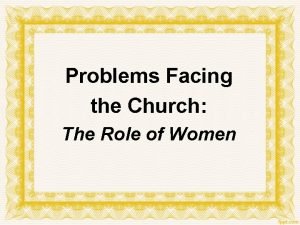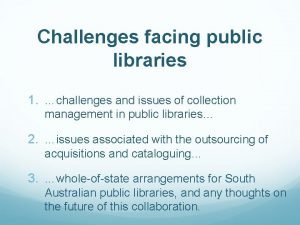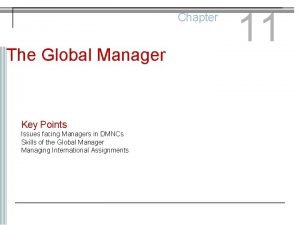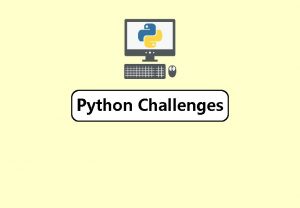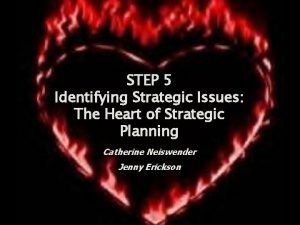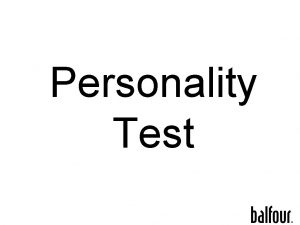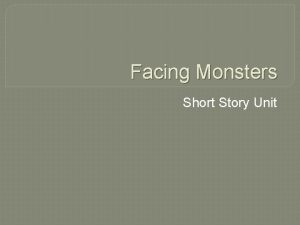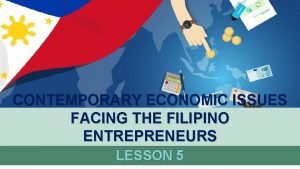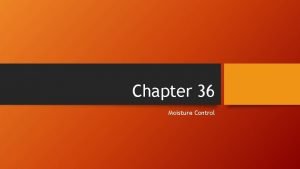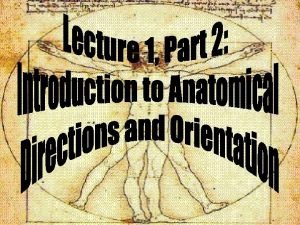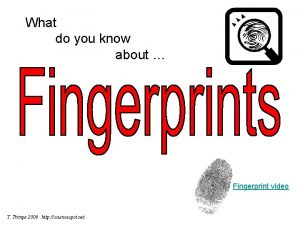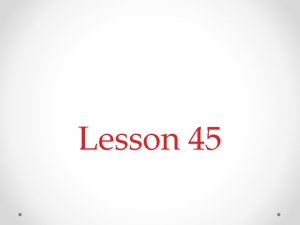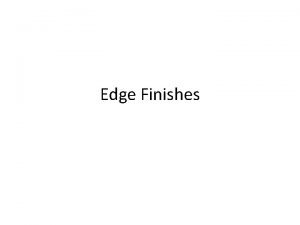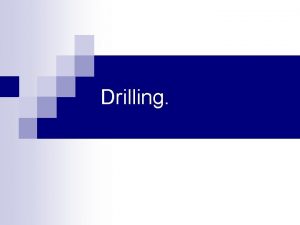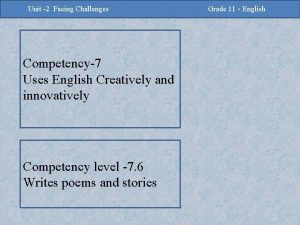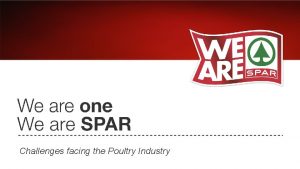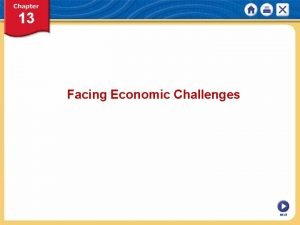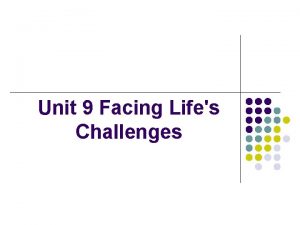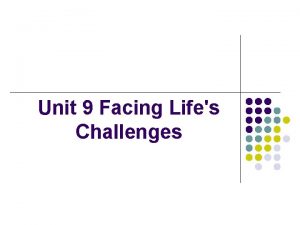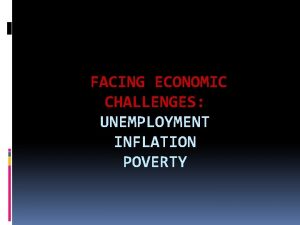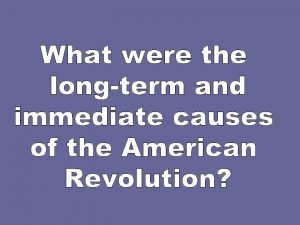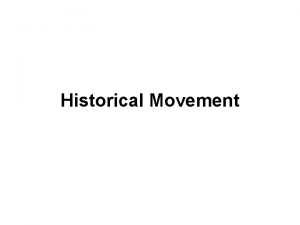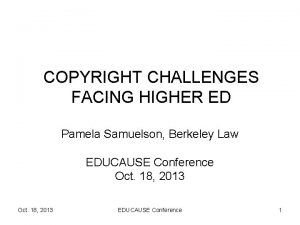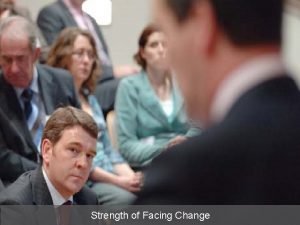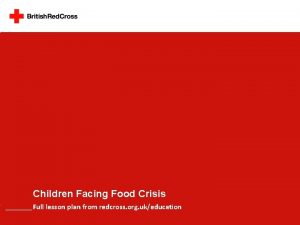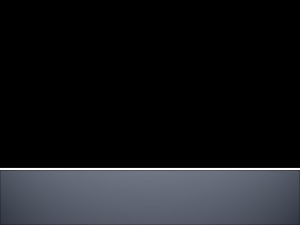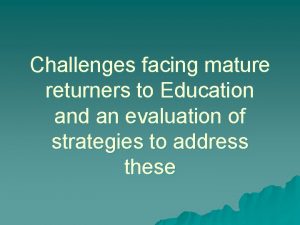Challenges Facing Higher Education 1 Higher Education Historical
























- Slides: 24

Challenges Facing Higher Education 1

Higher Education: Historical Perspective l American higher education underwent significant change in response to external pressures at the end of WWII, when a flood of new students entered the system l Simultaneously, federal research dollars began to flow to university researchers. l Higher education’s business model was redefined to respond to these pressures and trends, and in the process became far more complex. l It has remained relatively static since then, as there was not much external pressure for significant change over the ensuing half century. 2

Principles l Public Higher education should provide equal opportunity for all. l All should have equal access to higher education and an equal chance of succeeding. l Our Universities must deliver value (high quality, affordable tuition, and access) and we must measure what they are delivering. l Our business model in higher education is under challenge – We are beyond being able to fine-tune the model – We will need to see radical change. – Our revenue sources are challenged and will not increase in the coming years 3

Facts l Since the beginning of the 21 st century, higher education enrollment has grown faster than in any decade since the 1960 s. From 2008 to 2011, enrollment grew by 13. 6 percent and an another 3. 9 percent between 2009 and 2014. 4

Variability Across States: Enrollment 5

Facts l Since the beginning of the 21 st century, higher education enrollment has grown faster than in any decade since the 1960 s. From 2008 to 2011, enrollment grew 13. 6 percent and another 3. 9 percent between 2009 and 2014. l Even if for the last two years average state appropriation per student grew, state appropriations per student in 2014 were 13. 3 percent below 2009 levels. 6

Variability Across States: Appropriations Forty-seven states decreased constant dollar per-student funding during this five-year period, 21 by more than 20 percent 7

Variability Across States: Appropriations 8

Facts l Since the beginning of the 21 st century, higher education enrollment has grown faster than in any decade since the 1960 s. From 2008 to 2011, enrollment grew 13. 6 percent and another 3. 9 percent between 2009 and 2014. l Even if for the last two years average state appropriation per student grew, state appropriations per student in 2014 were 13. 3 percent below 2009 levels. l Tuition continues to increase and now represent 42. 7 percent of total educational revenue compared to 32. 0 percent in 2005. 9

National Trends In State Funding For Higher Education 10

Variability Across States: Tuition Revenue 11

Challenges Facing Higher Education 12

The “New Normal” in Higher Education l States revenue will either decrease or be stagnant over the next 8 -10 years. l Retirement and health care costs simultaneously will continue to drive up the cost of higher education and compete with education for limited public resources. 13

Challenges Facing Higher Education Long Term Tax Forecast: Percent Change from Previous Year State Medicaid Spending Starting in 2017, State Medicaid spending is projected to outpace revenue. 14

Challenges Facing Higher Education (cont’d) State Medicaid Spending Medicaid spending costs as a percent of state budget is projected to increase dramatically beyond 2020. Higher Ed Funding Iowa is among the states where appropriations for higher education will fall the most. 15

Challenges Facing Higher Education (cont’d) State Appropriations to Education per $1000 of Personal Income State Appropriations for Higher Ed as a Share of State Expenditures Source: Kane, T. , Orzag, P. , Gunter, D. State Fiscal Constraints and Higher Education Spending: The Role of Medicaid and the Business Cycle. Urban Institute, 2003. 16

The “New Normal” in Higher Education l States revenue will either decrease or be stagnant over the next 8 -10 years. l Retirement and health care costs simultaneously will continue to drive up the cost of higher education and compete with education for limited public resources. l Students and their families make increasingly greater financial sacrifices in order to complete a postsecondary education. l Schools and colleges find new ways of increasing productivity and absorb reductions in state support while increasing degree production without compromising quality. 17

National Trends in Revenue 18

Job Placement Rates of New Ph. Ds 19

Challenges The Present Environment for American Higher Education is in Flux. 1. Two back-to-back recessions in this century • Both family incomes and wealth have suffered greatly. • The ability of the public sector to support higher education has decreased. • Considerable financial pressure on many institutions (real costs increased by 3% to 4% annually). 2. The combination of a slowed economy and technological “productivity increasing” advances have left many recent graduates either unemployed or underemployed. 3. The number of people who need to be educated for the jobs of the future exceed the capacity of the current system. 4. Higher education systems around the world are developing rapidly, providing new challenges to America’s claim on the best system of higher education in the world. 5. In 1962 one cent of every dollar spent in America went on higher education; today this figure has tripled. But America has only the 15 th-largest proportion of young people with a university education – no additional value has been created to match this extra spending. 20

Other Challenges Facing Higher Education l Higher education is a mixture of multiple generic business models with its three missions of education, research, and social growth of students. – The high overall cost of higher education arises in significant degree from the high overhead created when multiple business models are working simultaneously. – Trying to optimize three business models within the constraints of one organization means than none of the models is truly optimized with respect to either costs (higher) or outcomes (lower). – When multiple models are running simultaneously, considerable cost shifting and cost sharing typically occur, making it almost impossible to calculate the real cost of any activity, further hampering efforts of cost control. l Rise in Massive Open On-Line Classes (MOOC) – what will be the role of professors l Lecture component of a class could become a commodity like textbook l Universities that will survive will be the ones with better pedagogy who will be providing the social context to motivate the students 21

Other Challenges Facing Higher Education l How will the state balance the need for higher education support with the needs of other major state programs given limited resources and budgetary pressures, especially as the demands and obligations of other major budget drivers increase faster than overall state revenues l What tuition levels are appropriate given the costs of higher education, its benefits to individuals and to the general public, and the desirability of encouraging participation and improving degree and certificate attainment l What levels of productivity and efficiency should we expect from an industry with costs primarily driven by personnel needs 22

Outcome Measures • Tackle campus-level obstacles to innovation. – State policymakers should give colleges incentives to innovate by offering higher levels of funding to institutions with better student outcomes – Faculty should be treated as enablers of innovation and be provided incentives to encourage development of innovative teaching models. • Fill information gaps about student-learning and job-market outcomes. To provide prospective students — and taxpayers — better metrics to assess higher education institutions, the state should provide information on labor-market outcomes. • Overcome barriers to taking innovative models to scale. Clear and accessible information about prices and student outcomes, both in the classroom and in the labor market, will introduce greater competition in the higher education sector. 23

Thank You 24
 Challenges facing global managers
Challenges facing global managers Am virtual sourcing international
Am virtual sourcing international What are the challenges facing the church today
What are the challenges facing the church today Contemporary business world
Contemporary business world What are the major challenges facing public libraries
What are the major challenges facing public libraries Challenges facing global managers
Challenges facing global managers Challenges facing family medicine
Challenges facing family medicine Historical background of environmental education
Historical background of environmental education Physical education during primitive era
Physical education during primitive era Python challenge 22
Python challenge 22 Education for all 2000-2015: achievements and challenges
Education for all 2000-2015: achievements and challenges Two facing pages in a yearbook
Two facing pages in a yearbook Identifying strategic issues facing the organization
Identifying strategic issues facing the organization Check me
Check me Standing up position medical term
Standing up position medical term Guide words example
Guide words example Carnivorous fish
Carnivorous fish How does investment affect filipino entrepreneurs
How does investment affect filipino entrepreneurs Chapter 36 moisture control
Chapter 36 moisture control Hands facing forward
Hands facing forward Radial vs ulnar loop
Radial vs ulnar loop Facing consequences at eden prairie high
Facing consequences at eden prairie high What is the purpose of facing
What is the purpose of facing Reaming process
Reaming process The head of the virgin in three-quarter view facing right
The head of the virgin in three-quarter view facing right


